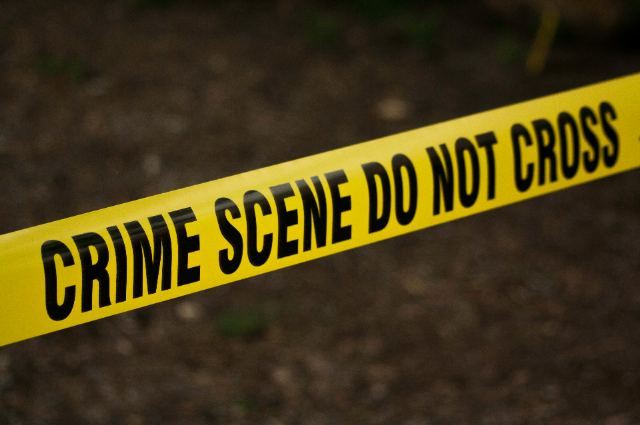
The vehicular explosion that occurred near Delhi's iconic Red Fort on November 10th represents more than just another entry in the forbidding record of security incidents. It stands as a stark reminder that the forces of destruction recognize no boundaries neither physical nor symbolic, when pursuing their malicious agendas. The loss of at least ten innocent lives and injuries to over thirty others in this horrific incident demands not just our immediate attention but a deeper reflection on what such attacks mean for our collective security and national consciousness.
The Anatomy of a Tragedy
What unfolded on that fateful evening was a scene of chaos and devastation that few could have anticipated during their routine commute home. Shortly before 7 PM local time, a slow-moving vehicle approached a traffic signal near the Red Fort metro station a location bustling with everyday life, commuters heading home, vendors wrapping up their day's work, and tourists capturing memories of one of India's most treasured monuments.
The vehicle came to a complete stop at the red light, an action so ordinary that it would have drawn no particular attention from the hundreds of people in the vicinity. What happened next, however, was anything but ordinary. The explosion that tore through the vehicle transformed a moment of routine into one of terror, sending shockwaves both literal and figurative through the heart of the capital.
The immediate aftermath painted a picture of devastation that will remain etched in the memories of those who witnessed it. At least six vehicles and three autorickshaws were consumed by flames, their twisted metal frames standing as silent witnesses to the violence that had just occurred. The orange flames that shot into the darkening sky became a beacon that drew motorcyclists and pedestrians rushing toward the scene, many driven by the instinct to help even as danger still lurked.
Human Cost Beyond Statistics
While official figures speak of ten confirmed deaths and more than thirty injured, these numbers barely capture the human tragedy that unfolded. Behind each statistic lies a life cut short, a family shattered, and dreams left unfulfilled. According to medical professionals at Lok Nayak Hospital, many of the injured individuals were in critical condition, with recovery uncertain. This sobering assessment reminds us that the final toll of such incidents extends far beyond the immediate casualties, encompassing the long-term physical and psychological trauma borne by survivors and witnesses alike.
The blast's impact rippled outward in circles of fear and disruption. Residents in nearby neighbourhoods reported hearing the explosion and feeling their windows shake from the force of the detonation. For many, the sound represented a fundamental violation of their sense of safety in their own homes. The trauma of such experiences cannot be measured in casualty counts alone and it resides in the collective psyche of a community forced to confront the reality of violence in their midst.
A Symbol Under Siege
The choice of location for this attack carries profound symbolic weight that cannot be overlooked. The Red Fort, or Lal Qila as it is known in India, stands as one of the nation's most significant historical monuments. Built in the seventeenth century during the Mughal era, it represents centuries of Indian history and serves as a powerful symbol of the nation's cultural heritage. It is from the fortifications of the Red Fort that the Prime Minister addresses the nation each Independence Day, making it intrinsically linked to India's sovereignty and identity.
Attacking near such a landmark sends a message that extends beyond the immediate violence. It represents an assault on the very symbols that bind a nation together, an attempt to sow fear in spaces that should inspire pride and unity. The perpetrators of such acts understand that striking near monuments of national significance creates psychological impacts that far exceed the physical damage inflicted.
The Government Response and Investigation
The swift response from the highest levels of government underscores the gravity with which this incident has been treated. The Cabinet's formal resolution condemning the car explosion as a "terrorist incident" perpetrated by anti-national forces represents an official acknowledgment of the attack's nature and intent. Union Minister Ashwini Vaishnaw's statement, delivered shortly after a Cabinet Committee on Security meeting chaired by Prime Minister Narendra Modi, emphasized the government's determination to thoroughly investigate the incident and bring those responsible to justice.
The Delhi Police, under Commissioner Satish Golcha's leadership has launched a comprehensive investigation approaching the explosion from multiple angles. Authorities have committed to examining surveillance footage from cameras in the vicinity, a crucial step in piecing together the sequence of events and potentially identifying those responsible. Home Minister Amit Shah's decision to personally visit the attack site signals the government's hands-on approach to addressing this security challenge.
Nationwide Security Implications
The immediate aftermath saw security heightened across the entire nation with airports, railway stations, government buildings, heritage sites, and other critical infrastructure placed on high alert. This precautionary measure, coordinated by the Central Industrial Security Force, reflects an understanding that such attacks often come in waves or inspire copycat attempts. The ramping up of security protocols nationwide demonstrates both vigilance and the unfortunate reality that in today's interconnected world, a threat in one location carries implications for security everywhere.
Looking Forward: Resilience in the Face of Terror
As the investigation continues and the nation processes this tragedy, several questions demand our attention. How do we balance the need for enhanced security with the preservation of open, accessible public spaces that define democratic societies? What measures can be implemented to prevent similar incidents without transforming our cities into fortress-like environments that diminish the quality of daily life?
The Red Fort has stood for centuries, enduring invasions, political upheavals, and the passage of time. It will continue to stand as a symbol of India's enduring heritage and resilience, refusing to be diminished by those who would use violence to advance their destructive agendas.
. . .
References:
